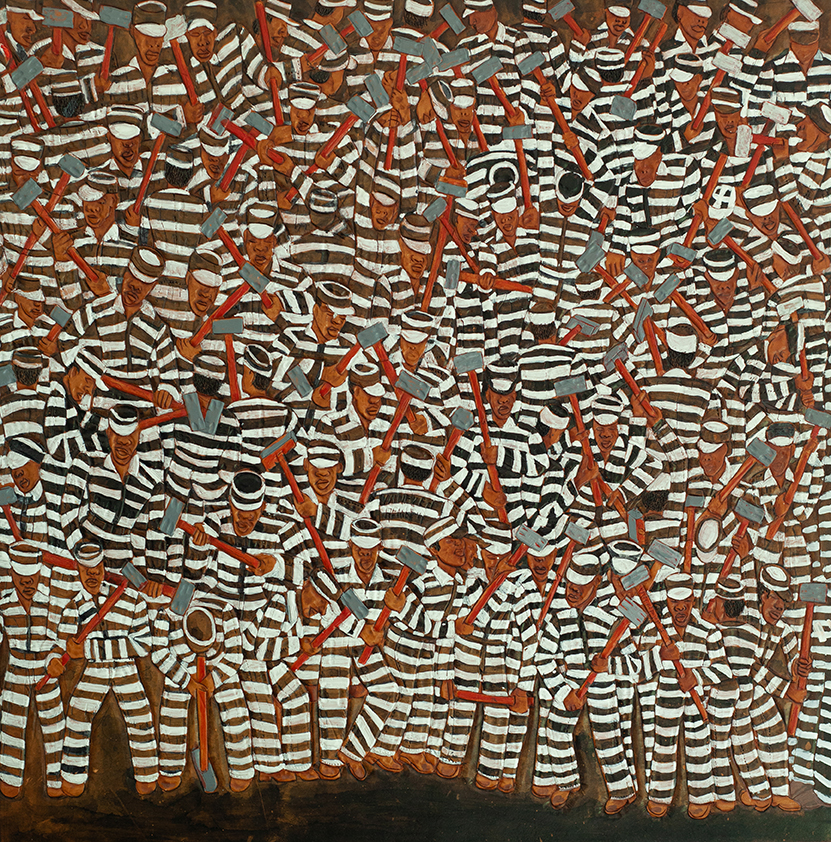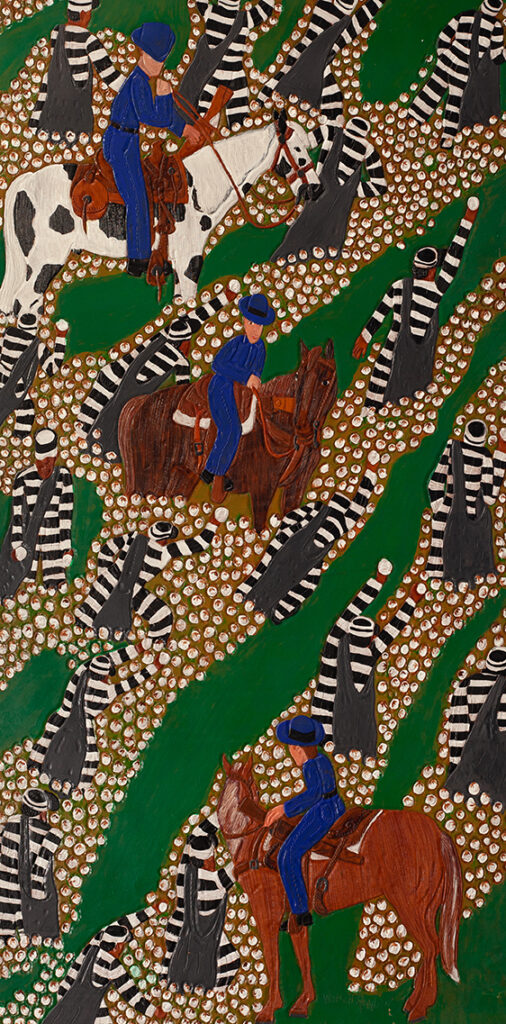Fort Gansevoort, New York City – October 8 – December 18, 2021
by Christopher Hart Chambers
We are animals. We do cruel things to one another. Indeed large galaxies engulf smaller ones. It’s physics. That doesn’t excuse horror: it exists. As an art critic, social justice is not my forte. I write about Winfred Rembert‘s artwork because of its unique graphic sensibility, tactile sensuality, and rhythmic musicality, regardless of its poignant social critique and the obscene hardships the artist endured.

Inarguably this is folk art for the sincere, unschooled naif figuration. These paintings on tooled leather almost fall into the category of bas relief for their meticulous textural quality. Three dimensional modeling is sometimes achieved by pressings into the leather and outlines are burnished into it. The intricately repetitive patterning is reminiscent of surface and textile design. For the most part the colorful dyes are applied in flat, hard edged sections, although here and about a little brushwork remains evident. Formal perspective and color theory are completely ignored; horses, human figures, and other organic elements are the same size regardless of where in space our common sense tells us they must reside. These aspects amount to remarkably charming compositions, full of joy and light despite the awful story of repression and abuse they manifest. The work is original and genuine. In fact, Rembert learned his skills from a fellow inmate while doing time in jail down south during the shameful Jim Crow era of American History.

I never liked the highbrow term, “outsider art.” Insider in this context only means one studied a particular set of directives set forth by an agreed upon body of others. We all use what is at our disposal to the best of our abilities. Winfred Rembert‘s art is not endearing and appealing because of formal schooling or the lack thereof. It is likable and very good because of the artist’s natural talent, unique vision, and persistent hard work.
